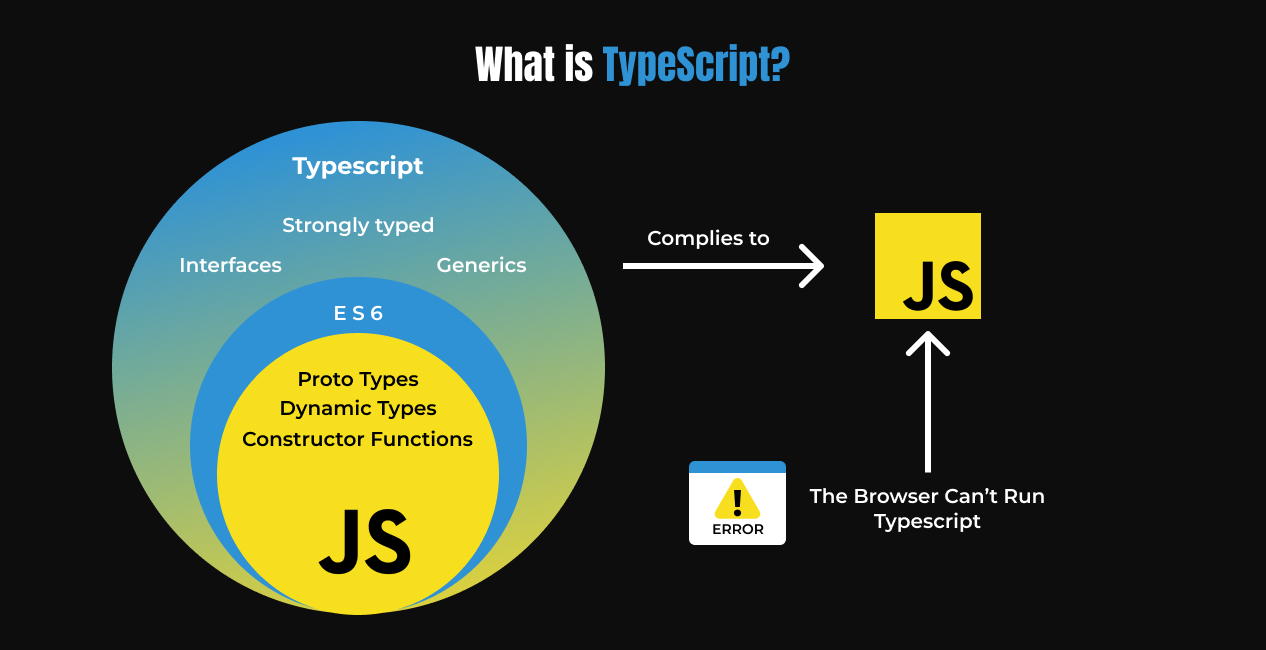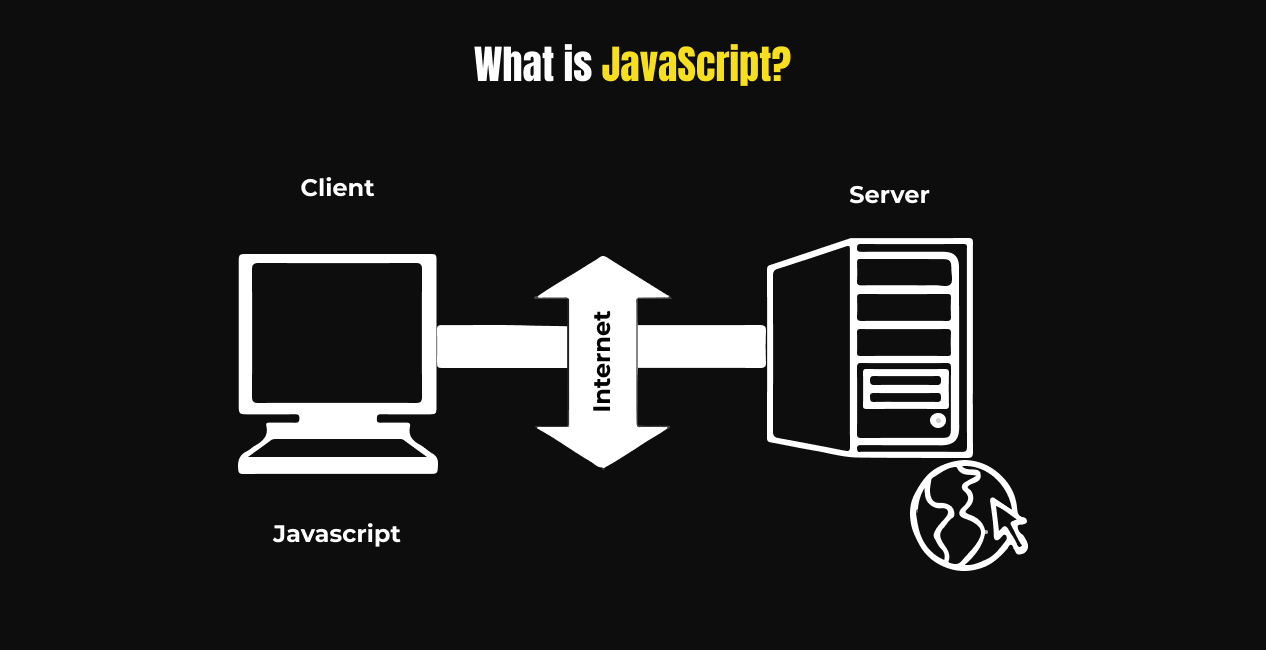Choosing between TypeScript vs JavaScript is a critical decision for any project, often determined by organizational needs rather than sheer popularity. With many programming languages available, developers face the challenge of selecting the most suitable one. While simplicity may initially seem appealing, it’s essential to weigh the long-term advantages and differences between TypeScript and JavaScript.
It is advisable to pay attention to all the aspects of the project. Proper research initially helps identify the right programming language for the project. This will let you improve, support, and secure the project in less time.
There are many programming languages available. Choosing one for your project can be a challenging task. JavaScript and TypeScript are the most commonly used programming languages for web application development. Both are widely used programming languages known for their open-source presence and the host features they offer to the developers. The usage of these languages depends on many factors. T
oday, let’s check TS vs JS and whether TypeScript is better than JavaScript, their benefits and disadvantages, and know which is better.
What is TypeScript?

TypeScript is a free-source, high-level performing programming language developed by Microsoft in 2012. Static typing, optional typing, ES6+ features, OOP features, and many other capabilities make it a sophisticated choice for developing front-end and back-end web applications. Additionally, it can be used to create applications using JavaScript framework such as Angular.
The TypeScript code gets compiled into JavaScript with the help of the TypeScript compiler. TypeScript doesn’t support multiple programming languages but offers features and capabilities similar to other programming languages.
TypeScript Features
- It is an object-oriented programming language supporting components, including classes, inheritance, interfaces, etc.
- The compilation feature of TypeScript enables the identification of errors before the runtime.
- Strong static typing allows you to define the types of variables, function parameters, and return values.
- Supports JavaScript Libraries as all the libraries and JavaScript code are valid.
- DOM manipulation handles the addition or removal of elements.
- Code readability provides ease in maintaining and debugging the code.
- Code completion in TSC or IDE helps to write code efficiently
Advantages of TypeScript
1) Static Typing
Static typing allows the developers to determine variables, parameters, and return types. This helps in resolving errors during the development process.

2) Code Readability
The type annotations function allows the code’s self-documentation, making it easier for the developers to comprehend the structure and purpose of the code.

3) Easy to spot the errors
One of the core benefits of TypeScript is that it is a compiler language, meaning the code is scanned line by line for an error. Transcript also searches for syntax errors, which helps in spotting the bugs.




4) Compatibility with other browsers and platforms
TypeScript extends JavaScript, which makes it feasible with almost every browser.
5) Structured coding through static typing
It helps to perform type-checking at the time of compilation.
6) Sustained interfaces
Interfaces describe multiple properties and function types.

Disadvantages of TypeScript
1) More code results in slower development
Large projects increase the file size, leading to slower development process
2) Requires compilation
TypeScript requires compilation while JavaScript doesn’t.
3) Security concerns
While TypeScript cannot prevent all security issues, it can identify potential problems at compile time.
What is TypeScript used for?
TypeScript helps developers in many ways; its host benefits make it a go-to choice.
a) Static typing
Static typing introduced to JavaScript lessens the likelihood of errors at compile time or runtime errors and improves code quality.
b) Code maintainability
With static typing, code becomes more self-documenting and straightforward to comprehend, allowing the developers to maintain the codebase for an extended period.
c) Tooling support
Static typing backs development tools, including IDEs like Visual Studio Code.
d) Enhanced productivity
Additional features of TypeScript, such as interfaces, enums, and advanced type checking lead to more efficient development.
e) Compatibility with JavaScript
TypeScript is the subset of JavaScript, meaning any valid JavaScript code is also logical in TypeScript.
f) Eco-system and community support
TypeScript has achieved popularity with impeccable adoption and a robust and active community.


Types of TypeScript
Below mentioned are a few types of TypeScript:-
1) Primitive Types
Primitive types in TypeScript include string, number, and boolean. Their types are inferred based on the type of their initializer.

2) Literal Types
Using literal types ensures an exact value for strings, numbers, or booleans.

3) Union Types
Union types in TypeScript can be defined with the | (pipe)operator. They are a combination of existing types.
4) Type Assertions
Sometimes, TypeScript may not be aware of the type of a value, in which case type assertions must be used.
5) Array Types
Adding “[]” to the end of the array member’s type describes array types. Union types can make more complex types.
 6) Tuple Types
6) Tuple Types
A tuple is a typed array of fixed length with predefined types for each index. An example of a tuple is the “useState” function.
 7) Null & undefined
7) Null & undefined
The behavior of Null and Undefined types is influenced by the strictNullCheck flag passed to the compiler. When the strictNullCheck flag is off, values that may be null or undefined can still be accessed generally without any checks. However, when the flag is on, you must test for null or undefined values before using any methods or properties on them.

What is JavaScript?

JavaScript first appeared in the year 1995. This web programming language is abbreviated as JS. It is one of the most commonly used client-side web pages incorporating third-party libraries.
JavaScript is a cross-platform offering some of the unique features like flexibility, dynamism, lightweight interpretation, support from all browsers, and JIT compilation. The primary purpose of JavaScript is to serve as a complementary scripting language. However, it is unsuitable for complex applications and aims to write only a few hundred lines of code.
JavaScript Features
- JavaScript is a scripting language inserted directly into HTML code and interpreted by the browser.
- JavaScript understands the data based on a timestamp derived from Unix time.
- JavaScript understands both the client and server to create appealing websites.
- JavaScript utilizes the navigator object for identifying operating systems.
- JavaScript has a built-in calculator that allows for direct mathematical operations in the console.
- JavaScript validates the form data on the client side of a web application.
Advantages of JavaScript
- It offers enhanced security for client-side applications.
- It can run on the client side, which helps reduce server load and overhead.
- Executing code on the client side makes it faster than server-side languages.
- It is one of the simplest languages to learn, particularly for web programming.
- JavaScript is enormously popular among the most significant and noteworthy companies.
- JavaScript’s ability to run on the client side helps reduce server load and overhead.
- It is a versatile language that is used to create interactive web pages.
- It offers developers a variety of interfaces to build engaging websites.
To leverage the benefits of JavaScript for your app, you must hire a JavaScript development company.
Disadvantages of JavaScript
- JavaScript security issues can create problems in server-side environments.
- Limited interoperability with other programming languages.
- Server-side rendering can increase the load on server costs and decrease performance, especially for high-traffic websites.
- JavaScript can be interpreted making it necessary to test and run the code on different platforms before publishing.
- JavaScript lacks a multiple inheritance feature.
- Slows down your site loading time, increases your server load, or causes rendering issues for search engine crawlers.
What is JavaScript used for?
1) Client-side web development
It runs in the browser and allows developers to create dynamic and interactive user interfaces.
2) Web browsers
It is supported by multiple web browsers, making it a fundamental part of modern web development.
3) Single-page applications
It is commonly used to develop single-page applications.
4) Server-side development
It gained popularity for both client-side and server-side development.
5) Mobile app development
JavaScript allows cross-platform development where a single codebase can deploy apps on multiple platforms.
6) Game development
It is used to create browser-based games.
7) Web APIs
It interacts with web APIs, allowing developers to fetch and send data to external servers.
8) Browser extensions
It is used to develop browser extensions with exceptional features & functionality.
9) Responsive user interfaces
The user input manages form submissions and creates adaptable user interfaces for different devices and screen sizes.
TypeScript vs JavaScript: Comparison Table
| Criteria | JavaScript | TypeScript |
| Initial release | 1995 | 2012 |
| Developed by | Netscape | Microsoft |
| Typing | Dynamically typed | Provides static typing |
| Syntax | Standard JavaScript Syntax | Similar to JavaScript, but comes with additional features |
| Compatibility | Not possible to execute TypeScript code within JavaScript files | Designed to be compatible with versions of JavaScript |
| Learning curve | Standard syntax is widely familiar amongst the developers | Learning additional features requires time and effort |
| Debugging | Additional debugging and testing might be necessary | Using stronger typing can assist in identifying errors |
| IDE support | Limited capabilities for validating and refactoring | Extensive validation and refactoring capabilities |
| Complexity | Easy-to-learn scripting language for new developers | Understanding the additional features is complex. It may take some time and effort. |
| Readability | Large code bases are more intricate to read and decipher | Using a type system and object-oriented approach can enhance code readability |
| Compatibility | JavaScript code is also considered valid TypeScript code | TypeScript code is transformed into fully compliant JavaScript during compilation |
JavaScript vs TypeScript: Key Differences
While comparing TypeScript and JavaScript, we need to keep in mind that there few factors we need to consider:-
1) Learning curve
TypeScript is one of the supersets of JavaScript. To perform TypeScript coding, developers must have a thorough basic understanding and knowledge of JavaScript. Moreover, they (developers) must also be aware of the OOPS concept.
Conversely, JavaScript is a prevalent and easy-to-learn language that developers can get through easily. Many developers use it with HTML and CSS to develop web applications.
2) Support of developer community
TypeScript marked its presence in a short time and was implemented by many enterprises. There are many tutorials and guides available that can assist you in learning TypeScript. It also has a large developer community.
JavaScript offers many libraries, frameworks, and coding practices. It has a smaller community of developers.
3) Performance
TypeScript was created to address the challenges of developing large and complex applications. It allows developers to save time and achieve efficiency.
JavaScript is the language that runs in web browsers. TypeScript is a programming language that is a superset of JavaScript. TypeScript code needs to be compiled into JavaScript code before it is executed in a web browser.
4) Syntax
TypeScript offers variable declarations, a functional paradigm, and type system, unlike JavaScript. TypeScript syntax shares similarities with JScript and supports ECMAScript 2015 Standard features, modules, and arrow function syntax.
JavaScript, a C-based language, follows the ECMAScript definition but is not a typed language like TypeScript. It uses structured programming terminologies like if statements, switch statements, and do-while loops.
5) Tools and Frameworks
Backed by Microsoft, TypeScript has numerous leading frameworks and editors, ensuring tight integration with editors for error handling during compilation to prevent runtime errors.
JavaScript frameworks like ReactJS, VueJS, and Angular are widely available for web development projects, making them popular among programmers.
JavaScript vs. TypeScript example
Below is the illustration that defines the difference between JavaScript and TypeScript.
JavaScript Example:

In the above JavaScript examples, the “addNumbers” function considers two parameters ( ‘a’ and ‘b’) and returns their sum. The following function is called arguments ‘5’ and ’10’; later, the result is printed to the console.
TypeScript example:
Similarly let us consider taking the examples of TypeScript you will certainly find the difference:-


TypeScript enables explicit declaration of variable and parameter types and specifies return types in function signatures.
The variable ‘result’ is declared as a number, providing clarity on the data type.
TypeScript is a statically typed language, implying that the variable type is verified during compilation. If you risk assigning a non-numeric value to either variable a or b, or if the function fails to return a number, TypeScript will generate a compile-time error.
Wrapping up: TypeScript vs JavaScript
We have curated this article after gaining all the insights about TypeScript and JavaScript; the conclusion is both have pros and cons. TypeScript is suitable for those who are looking forward to developing readable code that is clean as well as neat. On the other hand, even though JavaScript is not a comprehensive programming language, it can be used with HTML to enhance web applications.
TypeScript is a programming language which is not supported by all web browsers but it uses tsc to compile it. Refer to the above article for a better understanding of this topic. If you are still trying to decide which technology to choose for your project, reach out to a Web App Development Company for assistance.




 6) Tuple Types
6) Tuple Types 7) Null & undefined
7) Null & undefined





